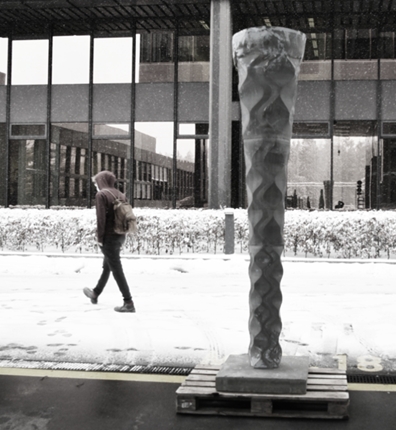In-Crease: Less Concrete More Paper
DOI:
https://doi.org/10.21809/rilemtechlett.2022.168Keywords:
Additive manufacturing, Digital concrete, Sustainability, Formworks, Bi-stable structures, OrigamiAbstract
Concrete is one of the most used materials after water. Largely owing to this, its environmental impact is substantial, although its embodied carbon per unit volume or mass is low when compared to most alternatives. This, along with the broad availability, good strength, durability and versatility of concrete means that it will remain a material of choice, although more efficient ways of using it must be found.
Structurally optimized building components are a means to do this as they can save about 50% material. Unfortunately, however, such elements are presently too expensive to produce owing to them requiring non-standard formwork. It is an objective of digital fabrication to propose solutions to this issue. In this con-text, Digital Casting Systems (DCS) have advanced material control strategies for setting-on-demand in digital concrete processing. Thereby, the formwork pressure is reduced to a minimum, which opens possibilities of rethinking formworks as systems that are dynamically shaping, millimetre thin or weakly supporting the material cast inside.
In this paper we present a brief overview of millimetre thin formworks and summarize the first realization of concrete elements that utilizes the mechanics of paper folding to make millimetre thin formworks up to 2.5 meters high. Such formworks could initially be flat packed, erected into shape, and eventually peeled-off and recycled in established material streams. This would reduce waste and transport cost, while offering a surface finish that meets the expectations for exposed concrete surfaces.

Downloads
Published
How to Cite
Issue
Section
License
Copyright (c) 2023 Ena Lloret-Fritschi, Joseph Choma, Fabio Scotto, Anna Szabo, Fabio Gramazio, Matthias Kohler, Robert J. Flatt

This work is licensed under a Creative Commons Attribution 4.0 International License.
Authors retain copyright of the articles published in RILEM Technical Letters and grant the journal the right of first publication with open access. The work is simultaneously licensed under Creative Commons Attribution 4.0 International License (CC BY 4.0) that allows others to share and adapt the work under the following terms: 1) a proper attribution is given in a form of bibliographic record with the DOI link directing to RILEM Technical Letters; 2) a link to the license is provided; 3) the changes (if any) are indicated.









